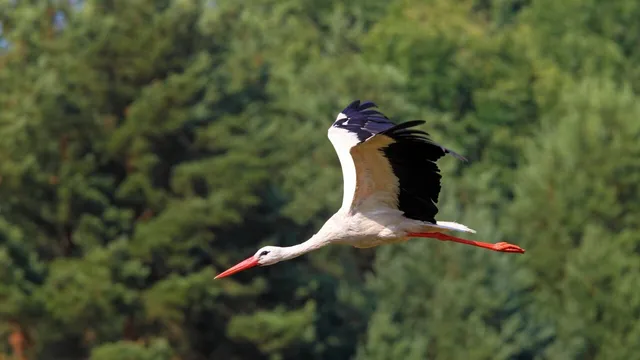A groundbreaking study, published in Proceedings of the National Academy of Sciences on March 4, sheds new light on the intricacies of animal migrations.
Research led by scientists from the University of Wyoming and the Max Planck Institute of Animal Behavior demonstrates that migrating animals refine their behavior as they age, suggesting experiential learning is crucial for successful migration.
A groundbreaking study, published in Proceedings of the National Academy of Sciences on March 4, sheds new light on the intricacies of animal migrations. Led by Ellen Aikens, a researcher affiliated with the University of Wyoming’s Haub School of Environment and Natural Resources and the Max Planck Institute of Animal Behavior, the research team delved into the migration patterns of white storks in southern Germany and Austria.
While genetics and social behavior have long been recognized as significant influencers of animal migrations, the study highlights the role of individual experience in shaping migratory movements. Aikens, whose research sits at the intersection of animal behavior and data science, spearheaded this innovative investigation, leveraging advanced computing and data analysis techniques to unravel the mysteries of migration.
Over a period spanning from 2013 to 2020, the team meticulously tracked more than 250 white storks across five breeding areas. Through sophisticated tracking methods, they not only traced the storks’ migration routes but also monitored their timing, pace, and energy expenditure during flight. The findings revealed a compelling pattern: as storks age, their migration behavior evolves.
In their early years, young storks exhibit a sense of exploration, taking their time to navigate new territories during migration. However, with accumulated experience, older individuals adopt a more direct and efficient approach, foregoing exploration in favor of swift and purposeful movement. This transition, the researchers note, results in increased energy expenditure during migratory flight.
Lead author Aikens emphasized the significance of experiential learning in this process. “As the birds age and gain more experience, older individuals stop exploring new places and instead move more quickly and directly, resulting in greater energy expenditure during migratory flight,” she explained.
During the spring migration, the study observed a particularly intriguing phenomenon: individual storks gradually optimized their migration routes, finding more direct pathways between destinations. This phenomenon underscores the role of spatial memory acquired through learning, as storks progressively refine their routes over time.
The implications of these findings extend beyond white storks, potentially influencing our understanding of migration in various other species. By recognizing the importance of information acquisition and utilization in shaping migratory behavior, the study opens new avenues for conservation efforts aimed at preserving energy and time during migration.
While acknowledging the role of genetics and culturally inherited information in animal migrations, the researchers highlight the significance of learning within a lifetime. Whether guided by genetics or informed by experienced individuals, the process of learning represents a critical mechanism in shaping migration behavior, offering valuable insights into the adaptive strategies of migratory animals.
In a world where landscapes are constantly changing and unpredictable, the ability of animals to learn and adapt becomes increasingly vital.
By unraveling the intricate interplay between genetics, social behavior, and individual experience, studies like this contribute to our broader understanding of migrating animals and pave the way for more effective conservation strategies in an ever-evolving environment.
